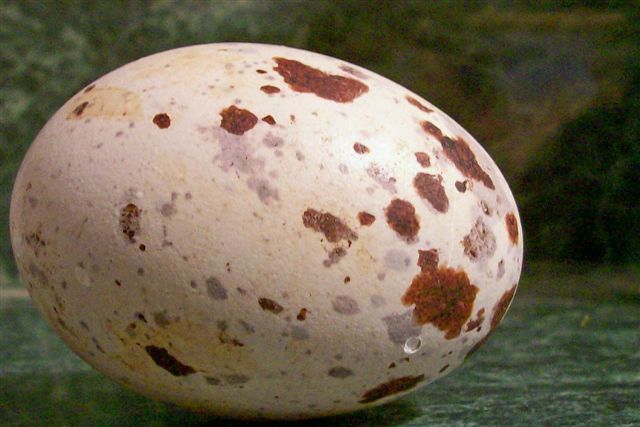
This egg was brought in by one of the dogs yesterday. It must be a wild turkey egg – not sure what else it could be.


This egg was brought in by one of the dogs yesterday. It must be a wild turkey egg – not sure what else it could be.
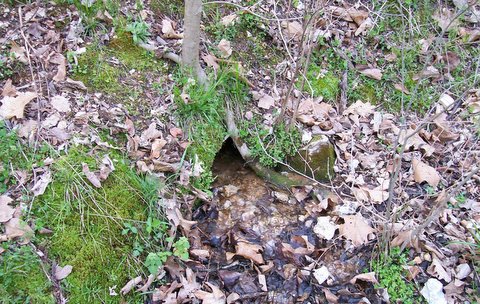
The smallest spring in this end of the hollow comes out of a triangular cave opening only about six inches high. While the three other springs roared after the recent heavy rainfalls, this quiet little spring only flowed a little bit heavier. It produces enough water to keep the moss around it green and the sapling above it growing.
And, of course, the redbuds are now in bloom. The flowers are not actually red – as can be seen in this photograph, but a purplish. These trees can reach a height of 50 feet, but rarely do. Also called a Judas Tree in some places. There are several dozen in the hollow.
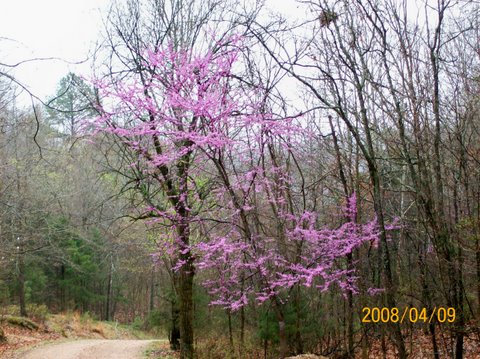
Here is a colony of may-apples (also called mandrakes) near the creek. I have been told that they are a good indicator that the soil is ideal for morel mushrooms. I have yet to find the two growing together, though.
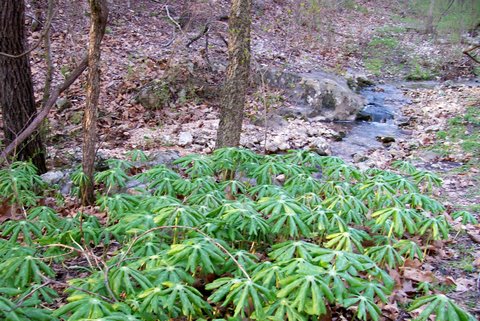
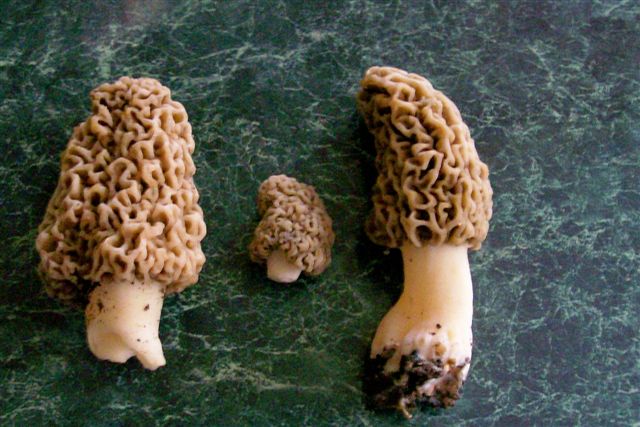
These are some Morel Mushrooms found in the hollow about an hour ago.
Tonight a single whip-poor-will was heard in the hollow. Several of these birds return annually from their winter homes along the Gulf Coast and southward to the hollow for the warmer months.
I was once attacked by a whip-poor-will along a lonely country road late at night after my pickup broke down. It beat me on the head and face with its wings and body again and again, until I ran away. Then it returned to its loud, rhythmic calls. What was that about, I wonder?
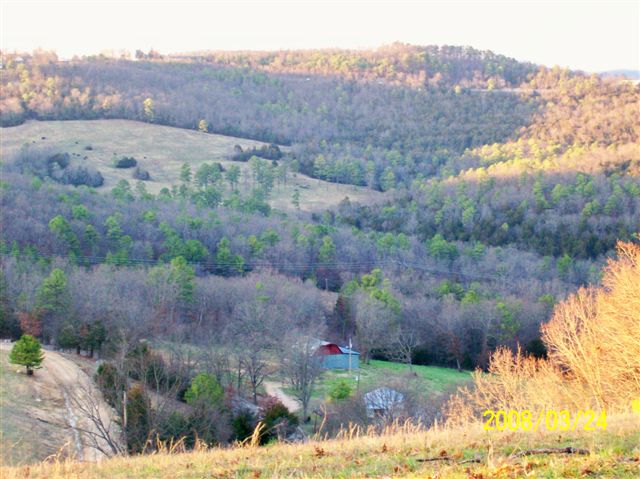
This is the view from one of the highest spots on the rim of the hollow, looking east (away from the hollow).
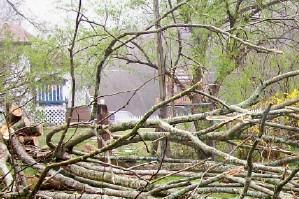
We lost a tree I was fond of today – it fell, its roots snapping and the tree body unable to keep its balance in the wet, muddy ground. An elegant mimosa tree, its many large limbs twisted and turned around each other making beautiful patterns. It produced quite a bit of shade and was once planned as the future home of a tree house. Amazing how small it looks in the photographs, when really it was a large, full tree. For the last few years I had noticed slugs on it at night – I wonder if they had something to do with its death.
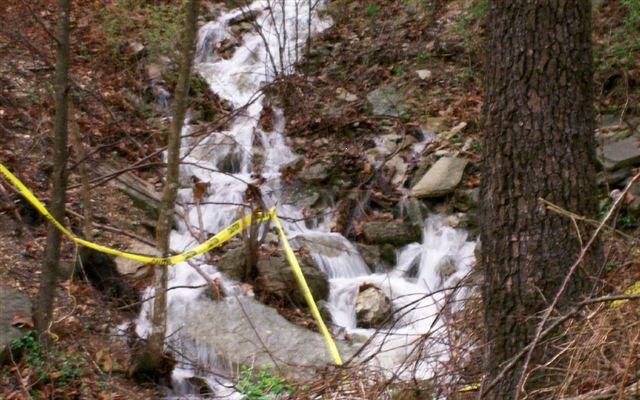
Our springs flow was even heavier today than earlier in the month.
Every year the first tree to bloom in the hollow is a sarvis growing on the eastern rim hillside. Here it is on March 26th. The redbuds can’t be far behind.
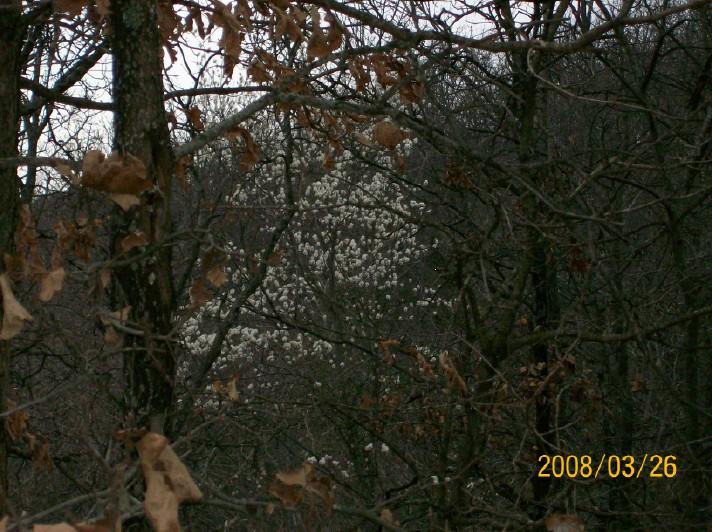
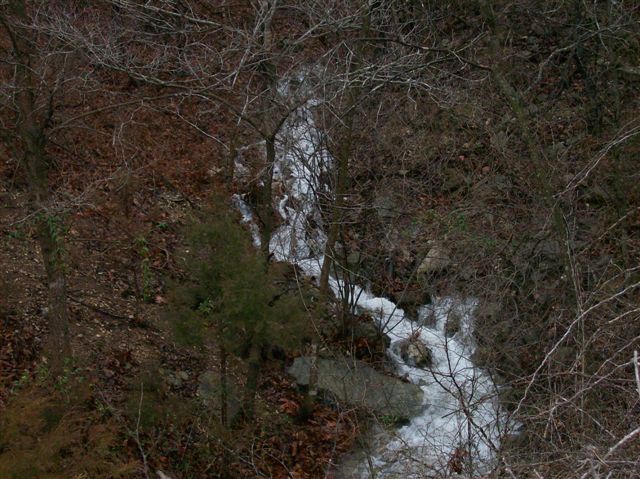
There are four springs in this end of the hollow. The largest marks the beginning of the creek that drains the surrounding hillsides. After a heavy rainfall, this normally placid spring becomes white and roaring. This photograph shows the spring coming down the hillside after such a rain. This March has been a very wet month causing flooding, mayhem, and death in the Ozarks.
This evening at dusk I noticed a single bat flitting around the hollow’s sky. Hopefully, as in years past, more and more bats will appear as Spring progresses.